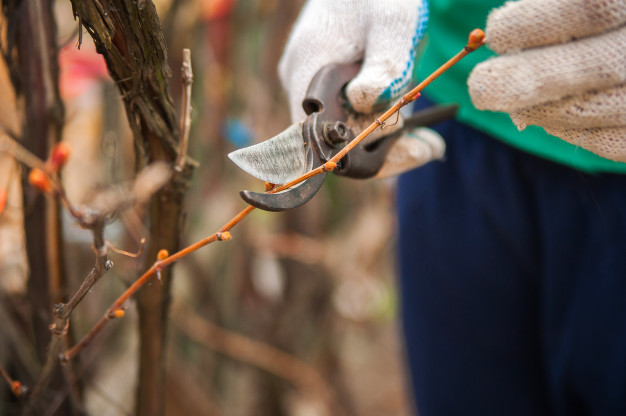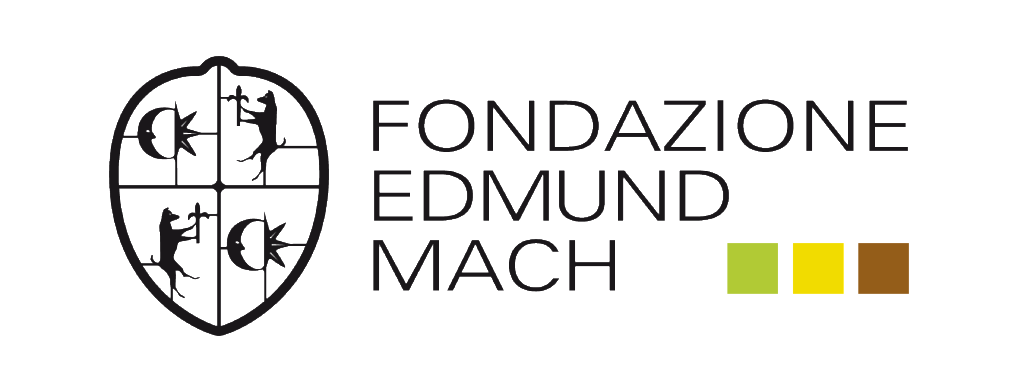Late pruning to delay phenology

The adjustment of the cultivation technique can be functional to satisfy consumer desires - wines with a lower alcohol content - and to emergencies deriving from the effect of global warming. Some innovative techniques, which are based on the delay in carrying out traditional green interventions, are useful for delaying, therefore to regularize, an excessively accelerated and/or unbalanced ripening. Three operational hypotheses are listed below.
- Several studies have verified that postponing the dry pruning period (winter) can slow down the course of grape ripening. The proposed techniques involve a delayed winter pruning of 1-3 months after the usual date of application, arriving to operate in the vegetative phases after the budding of the following season. Pruning later allows you to move the entire vegetative-productive cycle forward over time, with more evident results in short pruning systems (spurred cordon) than in long pruning systems (Guyot). In this way, it is possible to obtain considerable reductions in sugar concentration, less degradation of organic acids and optimal pH values of the must, without negative influences on the anthocyanic and phenolic content. A reasonable application seems to be the one for short-pruned farming systems, which consists of mechanized pre-pruning performed in mid-winter at a height of 8-10 buds followed, then, by a spring finishing to select and shorten the shoots. Due to the limitation of resources induced by late pruning, the inflorescence development already induced during the summer of the previous year may partially lose its ability to give functional flowers. Therefore, considering the slowdown in the technological maturation obtained, this technique is fit for those situations where it is required to contain productivity and slow down the technological maturation of grapes.
Further studies should be carried out in order to clarify the repeatability and consistency of the effects according to grape variety, the cultivation environment and the time of pruning, to find the right compromise between the desired limitation of production and the delay in the ripening process [1] [2] [3] [4].
- The topping technique commonly requires not to intervene after veraison to avoid competition with the bunch development during the ripening process. The variant technique involves a late topping performed well after veraison. From tests carried out on different vines, a significant reduction in the accumulation of sugars in the must is noted without changing the pH and the content of organic acids, anthocyanins and tannins both in the grape seeds and in the skins, thus postponing the optimal time of harvest [1].
- There is also the possibility of acting with techniques based on the induction of calibrated photosynthetic stress. From veraison onwards, the most important leaves for grape ripening are those located in the middle and apical portion of the shoot. Therefore, if the purpose is to slow down the ripening of the grapes, one possibility may be to induce photosynthetic stress, by performing a rather late mechanical defoliation, in post-veraison, concentrated on the upper part of the canopy. With the elimination of about 1/3 of the leaf surface, a more-than-proportional reduction of the leaf surface/grape ratio is obtained, which can achieve a reduction of sugars in the grape must of at least one degree Brix, without penalizing the other compositional parameters both of grapes and wine [6] [7].
By Stefano Pedò, Fondazione Edmund Mach (I)
Related documents
- https://www.soihs.it/italushortus/it/n-17-19-2-2012/palliotti-maturazione-dell-uva-e-gestione-della-chioma-in-vitis-.aspx
- Palliotti A., Tombesi S., Frioni T., Silvestroni O., Bellincontro A., Poni, S. (2014). Contenimento della produttività e dell'alcolicità potenziale di vini Sangiovese mediante posticipo della potatura invernale. Iin Acta Italus Hortus - Atti del V Convegno Nazionale di Viticoltura, (Foggia, 01-03 July), SOI, Firenze 2014: 163-164.
- Gatti M., Frioni T., Tombesi S., Palliotti A., Poni S. (2017). Vite: controllare la maturazione con la potatura tardiva. L’Informatore Agrario 36/2017: 38-42.
- Lanari V., Lattanzi T., Di Lena B., Palliotti A., Silvestroni O. (2019). Vite: maturazione posticipata con la potatura tardiva. L’Informatore Agrario 3/2019: 55-57.
- https://www.informatoreagrario.it/filiere-produttive/vitevino/vite-la-potatura-tardiva-allinea-maturita-tecnologica-fenolica/
- https://www.frontiersin.org/articles/10.3389/fchem.2017.00048/full
- https://www.soihs.it/ItalusHortus/Review/Review%2017/Palliotti.pdf
Relations
- Network
- List
- Geolocation
- More
VIRECLI - Viticoltura reseliente ai cambiamenti climatici
Il gruppo operativo per l’innovazione VIRECLI (cofinanziato dal PSR di Regione Lombardia) esplora le potenzialità dell’agricoltura di precisione come strumento per rispondere ad alcune problematiche emergenti del settore vitivinicolo

